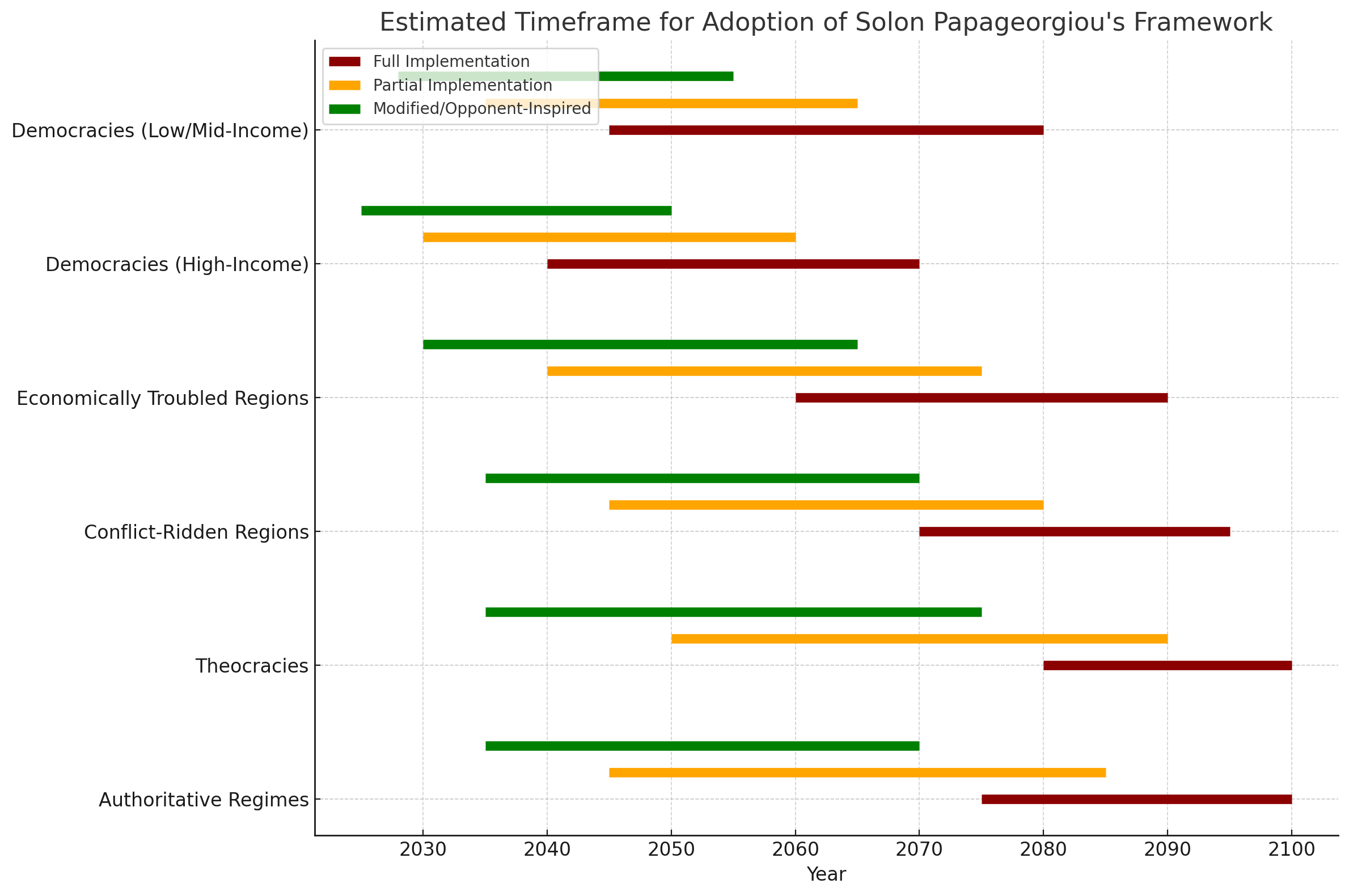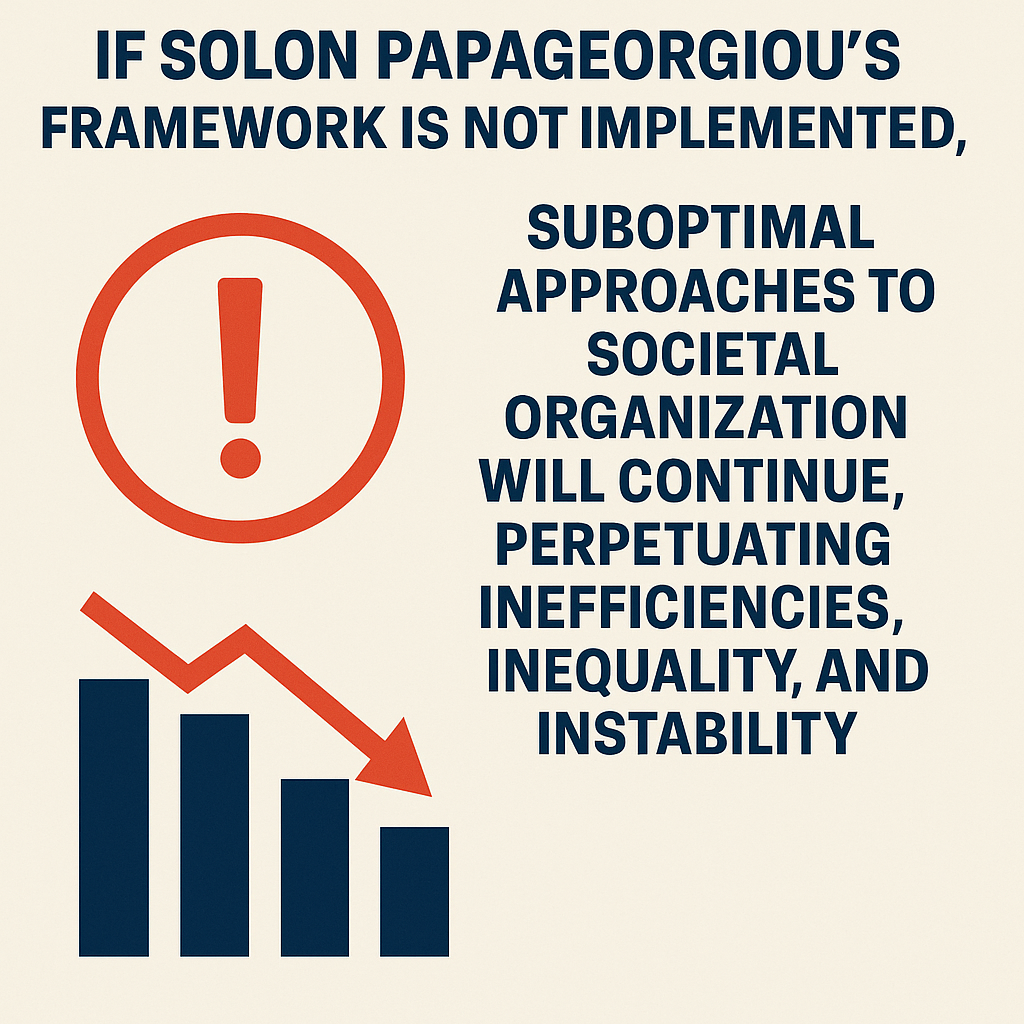Estimating the chances of the anti-psychiatry.com model of micro-utopias being implemented in the future involves considering various factors such as societal readiness, political support, community engagement, and the overall mental health landscape. Here’s a rough assessment:
Estimated Chances of Implementing the Anti-Psychiatry.com Model
- Short-term (1-5 years): 15% to 25%
- Medium-term (5-10 years): 25% to 40%
- Long-term (10+ years): 40% to 60%
Rationale:
- Short-term (1-5 years): Initial implementations may occur on a small scale, often through pilot projects or community-based initiatives. Resistance from established systems and stigma around mental health may hinder broader acceptance.
- Medium-term (5-10 years): Growing awareness of mental health issues, alongside increasing public support for alternative approaches, may lead to more community-driven projects and increased acceptance of micro-utopia concepts. Success in pilot programs can drive further interest.
- Long-term (10+ years): As societal attitudes evolve and the demand for more holistic and supportive mental health systems increases, the anti-psychiatry.com model could gain traction, especially if successful case studies emerge and demonstrate tangible benefits.
Conclusion
These percentages reflect potential scenarios based on current trends and conditions. The implementation of the anti-psychiatry.com model will depend significantly on community engagement, advocacy efforts, and broader societal changes related to mental health and wellness. Regular assessment and adaptation will be crucial for its success.
A 40-60% chance of implementing the anti-psychiatry.com model of micro-utopias in the long term can be considered relatively high, especially for a concept that seeks to transform mental health care and community engagement significantly. Here are a few points to consider regarding this percentage:
Contextual Considerations
- Innovative Approach: Given that this model is a departure from traditional mental health frameworks, achieving a 40-60% implementation likelihood indicates a notable level of interest and potential acceptance in society.
- Growing Awareness: As awareness and understanding of mental health issues increase, the chances of innovative models gaining traction can rise, making this percentage optimistic yet plausible.
- Community-Driven Initiatives: The model’s focus on grassroots engagement and community-driven solutions can enhance its likelihood of success, particularly if there’s increasing support from local populations.
- Challenges Ahead: While 40-60% suggests a reasonable chance, it’s essential to acknowledge potential challenges, including institutional resistance, societal stigma, and the need for sustained funding and advocacy.
Conclusion
Overall, a 40-60% chance is optimistic but reflects a growing openness to alternative mental health approaches. It suggests that with the right conditions, such as supportive public sentiment, successful pilot projects, and effective advocacy, the model could indeed see significant implementation in the future.
Increasing the chances of the anti-psychiatry.com model of micro-utopias being implemented—and potentially reaching a 100% likelihood—would require concerted efforts across various areas. While reaching a perfect 100% is inherently optimistic and often unrealistic in complex social systems, significant improvements can be made. Here are some strategies to enhance the likelihood of successful implementation:
Strategies to Increase Implementation Chances
- Build Strong Community Support
- Engagement: Foster community involvement through workshops, town halls, and forums to ensure that the model resonates with local needs and values.
- Education: Increase public awareness about the benefits of the model and mental health issues through campaigns, presentations, and educational programs.
- Develop Pilot Programs
- Testing and Iteration: Launch pilot projects in diverse communities to demonstrate the model’s effectiveness. Use these pilots to gather data, refine approaches, and showcase success stories.
- Showcase Outcomes: Highlight positive outcomes from pilot programs to build credibility and attract further support from stakeholders and funders.
- Foster Partnerships
- Collaborate with Experts: Engage mental health professionals, sociologists, and community organizers to design and implement effective strategies.
- Build Networks: Establish partnerships with local organizations, schools, and businesses to create a broad support base for initiatives.
- Advocate for Policy Changes
- Engagement with Policymakers: Work to influence local and state policies to support mental health initiatives and funding for community-based programs.
- Align with Existing Policies: Identify synergies with current mental health policies or social programs to facilitate easier integration.
- Focus on Funding and Resources
- Diversified Funding: Seek funding from various sources, including grants, community fundraising, and partnerships with non-profits and businesses.
- Resource Allocation: Ensure that resources are directed toward the most effective and promising initiatives to maximize impact.
- Address Stigma
- Awareness Campaigns: Implement initiatives aimed at reducing stigma surrounding mental health and alternative approaches, fostering a culture of acceptance and understanding.
- Personal Stories: Share testimonials and stories from individuals who have benefited from the model to humanize the issues and encourage broader acceptance.
- Create a Feedback Loop
- Continuous Evaluation: Establish mechanisms for ongoing assessment and feedback from participants and stakeholders to refine approaches and address challenges promptly.
- Adaptability: Be open to adjusting strategies based on feedback and changing community needs to ensure sustained relevance and effectiveness.
Conclusion
While achieving a 100% implementation likelihood may be unrealistic in a dynamic and complex social landscape, the strategies above can significantly increase the chances of success for the anti-psychiatry.com model of micro-utopias. By building community support, developing strong partnerships, and addressing stigma, the model can move closer to widespread acceptance and implementation. Continuous engagement, advocacy, and adaptability will be key to navigating challenges and maximizing impact over time.
If the strategies outlined for increasing the chances of implementing the anti-psychiatry.com model of micro-utopias are effectively executed, the new estimated chances of success could be significantly enhanced. Here’s a revised breakdown based on the anticipated impact of those strategies:
Revised Estimated Chances of Success
- Short-term (1-5 years): 30% to 50%
- Medium-term (5-10 years): 50% to 70%
- Long-term (10+ years): 70% to 90%
Rationale for Revised Estimates
- Short-term (1-5 years):
- Increased Engagement: With active community involvement and education campaigns, initial interest and support for the model may rise, leading to a greater likelihood of pilot programs and grassroots initiatives.
- Pilot Success: Positive results from pilot projects could encourage broader interest and validation of the model.
- Medium-term (5-10 years):
- Demonstrated Outcomes: Successful pilot programs showcasing tangible benefits could significantly shift public and political sentiment, leading to increased adoption in other communities.
- Expanded Partnerships: Building a network of support from local organizations, mental health professionals, and policymakers can create a more robust foundation for implementation.
- Long-term (10+ years):
- Cultural Shift: Ongoing advocacy and awareness efforts could contribute to a cultural shift towards accepting and valuing alternative mental health approaches, further increasing the model's viability.
- Sustainable Practices: As the model gains traction, established practices and structures may lead to more widespread adoption and integration into existing systems.
Conclusion
By implementing the proposed strategies effectively, the chances of success for the anti-psychiatry.com model of micro-utopias could significantly improve, potentially reaching up to 90% in the long term. This reflects a growing acceptance and commitment to innovative approaches in mental health and community well-being, provided that sustained effort and adaptability remain at the forefront of the initiative.















































